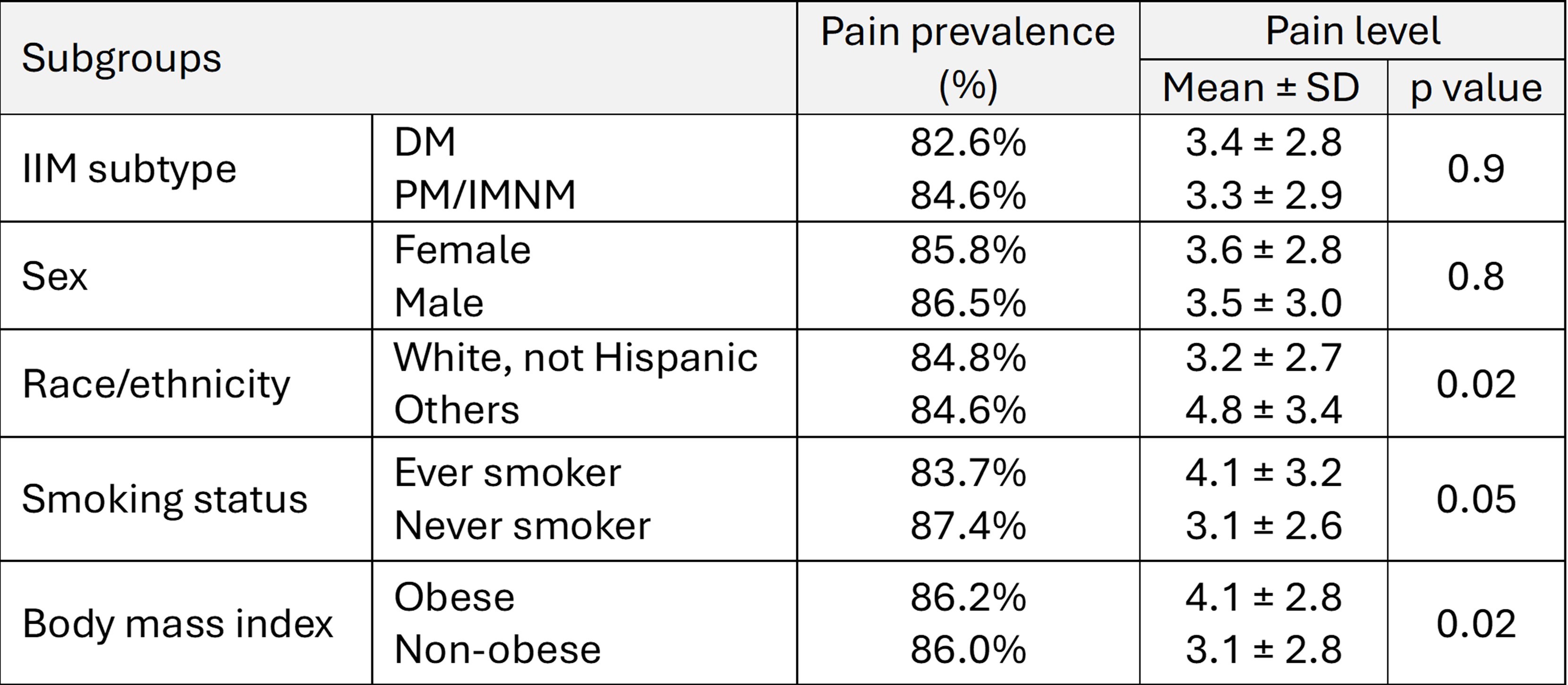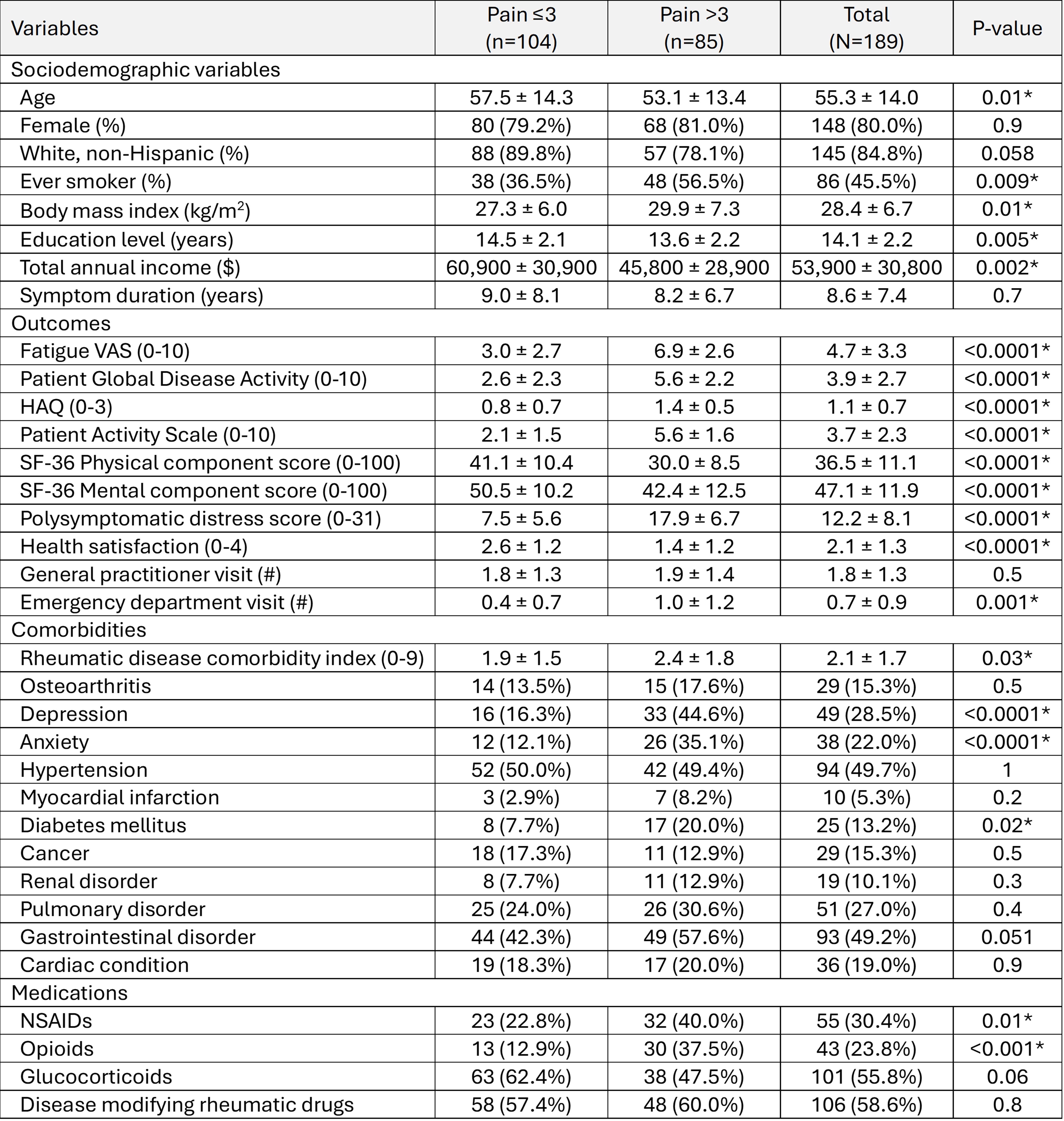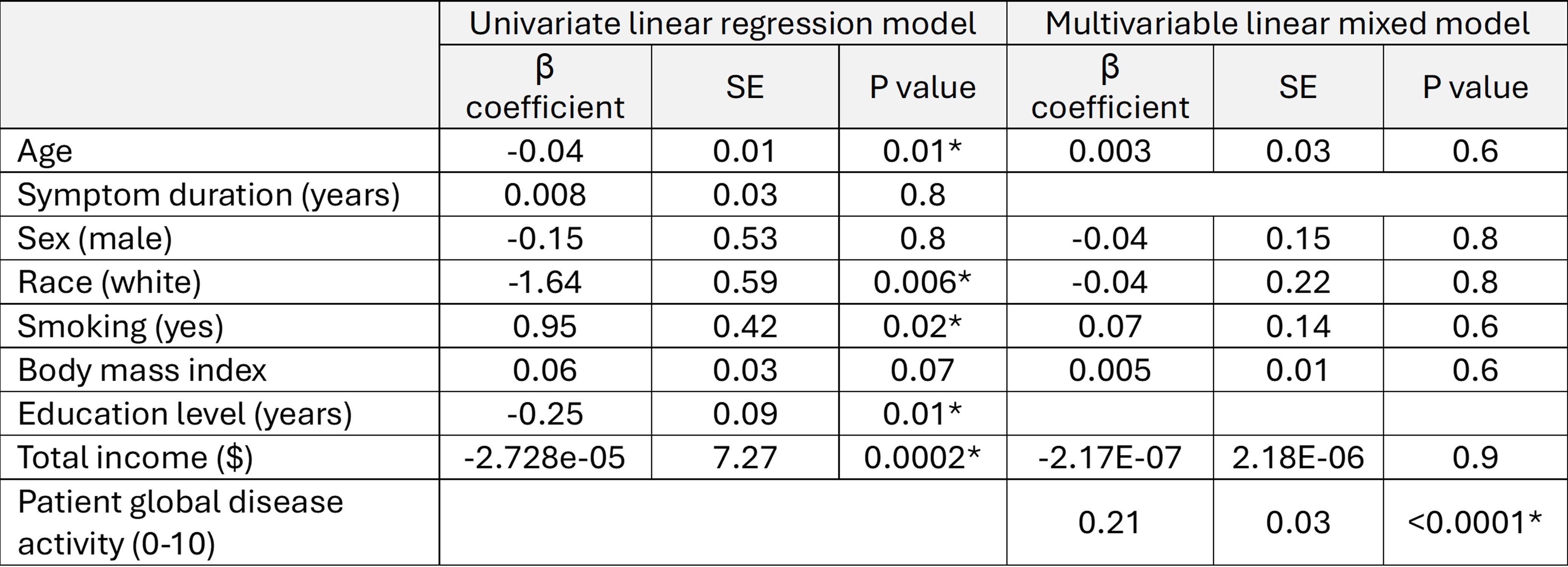Session Information
Date: Saturday, November 16, 2024
Title: Muscle Biology, Myositis & Myopathies – Basic & Clinical Science Poster I
Session Type: Poster Session A
Session Time: 10:30AM-12:30PM
Background/Purpose: The cardinal symptom of idiopathic inflammatory myopathies (IIM) is muscle weakness leading to functional limitations in the majority of the patients. With a shift towards understanding the experiences of patients living with disease over the last decade, other disease symptoms that are important to patients are being increasingly recognized. IIM was traditionally believed to cause a painless weakness; thus, pain has long been overlooked as a disease symptom. In this study, our goal is to examine the prevalence of pain and factors associated with pain levels in adults with IIM.
Methods: FORWARD is a longitudinal prospective registry of adults with rheumatic diseases in the US who are primarily recruited from rheumatology clinics. Participants included in this study had physician diagnosis of IIM and completed comprehensive semiannual questionnaires on their health status including pain, fatigue, physical function, disease activity, sociodemographic features, and health services. We compared the patients who reported at least moderate pain ( >3 on 10-point numeric rating scale [NRS]) and those who had no-mild pain (≤3). Linear regression models were performed to examine the univariate association between baseline sociodemographic factors and pain levels. The significant variables were then included in a linear mixed model to assess the association between change in pain levels and disease activity over time.
Results: A total of 210 patients with IIM (age 55.3 ± 14.0, 78% women) were included in the study. Approximately 86% reported pain with an average of 3.5 (±2.9) and 24%-30% using NSAIDs and opioids, respectively. About 63% reported joint pain while 62% had muscle pain. Pain prevalence was similar across subgroups of disease subtype, sex, race, smoking, and obesity (Table 1). The patients who reported at least moderate pain were more likely to be younger and have history of smoking, higher BMI, lower education level, total income, comorbidity index, depression, and anxiety (Table 2). These patients with at least moderate pain also had worse patient global disease activity, physical function, fatigue, polysymptomatic distress, and quality of life than those who had no-mild pain. Pain was significantly associated with lower health satisfaction and higher number of emergency room visits. A significant association was observed between pain levels and age, race, smoking, education level and total income on regression models (Table 3). After controlling for these variables, one unit increase in patient global disease activity was associated with an increase of 0.21 in pain levels over time.
Conclusion: In this prospective observational study with IIM patients from a US-wide longitudinal registry, pain was prevalent and was associated with poor sociodemographic factors, clinical outcomes, health satisfaction and care utilization. Results highlight the critical need to better understand the pain experienced by patients with IIM to best address the needs of the patients and provide patient-centric care.
Abbreviations: SD: Standard deviation; IIM: Idiopathic inflammatory myopathy; DM: Dermatomyositis; PM: Polymyositis; IMNM: Immune mediated necrotizing myopathy
Values represent mean ± SD or n (%)
Abbreviations: VAS: Visual analog scale, HAQ: Health Assessment Questionnaire, NSAIDs: Nonsteroidal anti-inflammatory drugs.
*p<0.005
†The model included pain levels as dependent variable, patient global disease activity as independent variable, and other variables as confounders.
Abbreviations: SE: Standard error
To cite this abstract in AMA style:
Saygin D, Malfait A, Wipfler K, McKennan C, Duan J, Michaud K, Lee Y. Pain Prevalence and Factors Associated with Pain Levels in Patients with Idiopathic Inflammatory Myopathies [abstract]. Arthritis Rheumatol. 2024; 76 (suppl 9). https://acrabstracts.org/abstract/pain-prevalence-and-factors-associated-with-pain-levels-in-patients-with-idiopathic-inflammatory-myopathies/. Accessed .« Back to ACR Convergence 2024
ACR Meeting Abstracts - https://acrabstracts.org/abstract/pain-prevalence-and-factors-associated-with-pain-levels-in-patients-with-idiopathic-inflammatory-myopathies/



